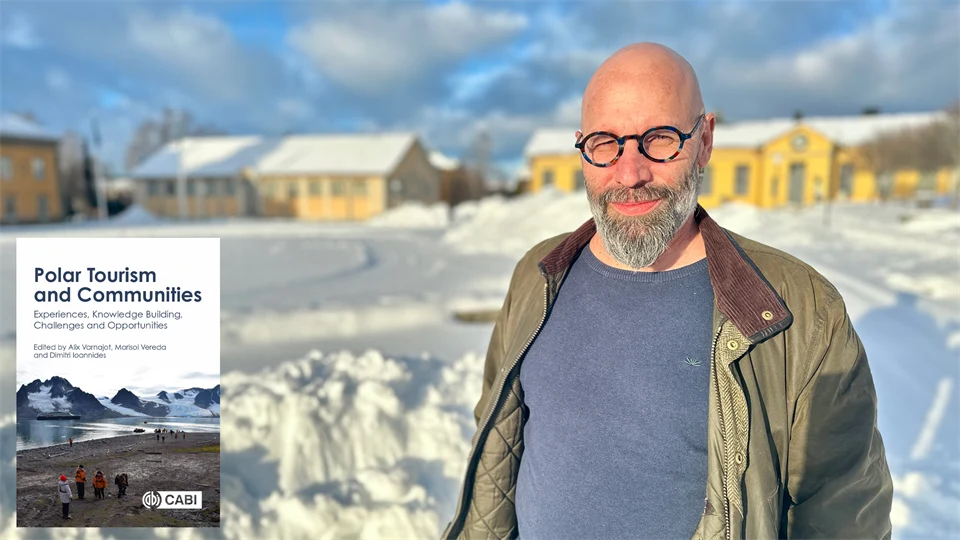New book on the impact of polar tourism on local communities
The complex interaction between polar tourism and local communities. This is the theme of a new book written by Dimitri Ioannides, professor of human geography and researcher at ETOUR, together with Alix Varnajot and Marisol Vereda.
Polar tourism has developed into a large-scale industry and the number of tourists visiting the polar regions is expected to continue to increase sharply in the coming years. This not only presents opportunities but also new challenges for the surrounding local communities – not least because of the increased impact on nature and the environment that tourism in the areas entails.
Dimitri Ioannides, Professor of Human Geography and researcher at ETOUR has recently published the book Polar Tourism and Communities: Experiences, Knowledge Building, Challenges and Opportunities together with Alix Varnajot, University of Oulu in Finland and Marisol Vereda, University of Tierra del Fuego in Argentina.
– There are not many books about polar tourism and polar communities and we hope that the book will help fill that gap in literature, says Dimitri Ioannides.
Members of the same network
Dimitri Ioannides, Alix Varnajot and Marisol Vereda are all members of IPTRN – The International Polar Tourism Research Network, a network of researchers from around the world focusing on tourism-related issues in the polar regions. The group meets every two years, and it was at a meeting in Argentina in 2022 that the idea for the book was born.
– Our meetings with the network usually result in a book, and that particular year, Alix and Marisol asked if I wanted to be involved in writing a book with them, because of my previous experience as author and editor in various book projects. We started working on the book in late 2023, and it was released in January this year. In addition to acting as one of the co-editors, my role has been to be involved as a mentor to guide my colleagues through the process and it has gone great, says Dimitri Ioannides.
Challenges and experiences in focus
The book's sixteen chapters are written by various researchers around the world and contain examples from the areas around the Arctic and Antarctica. It focuses on challenges and experiences from the interaction between polar tourism and local communities, and covers a broad range of topics including safety, environmental care, increase in the number of visitors, and the pursuit of new experiences at the farthest extremes of the world. Some of the chapters have resulted from collaborations between researchers and practitioners. Dimitri believes that such efforts serve to better combine theoretical frameworks within real-life settings.
– We believe that the book can be a good source of knowledge for both academics and practitioners in the tourism sector who want more knowledge about polar tourism and polar communities. Some chapters address practical issues and concrete examples of how tourism in polar regions affects the local population as well as the challenges faced by small polar communities that depend on tourism, says Dimitri Ioannides.
Read more about the IPTRN (International Polar Tourism Research Network)
